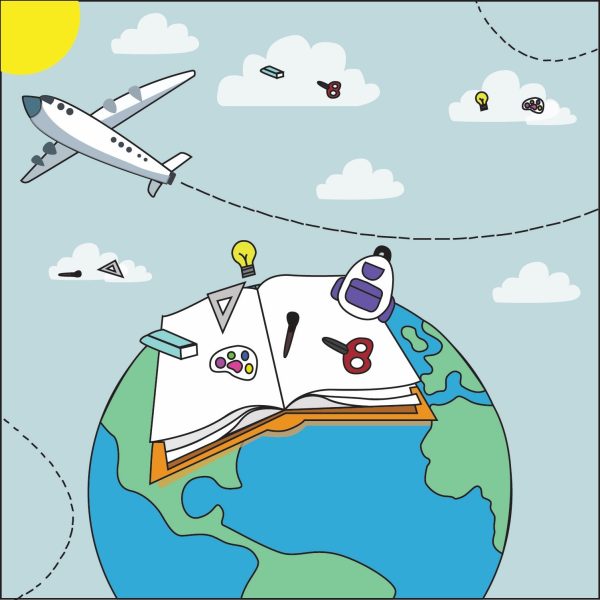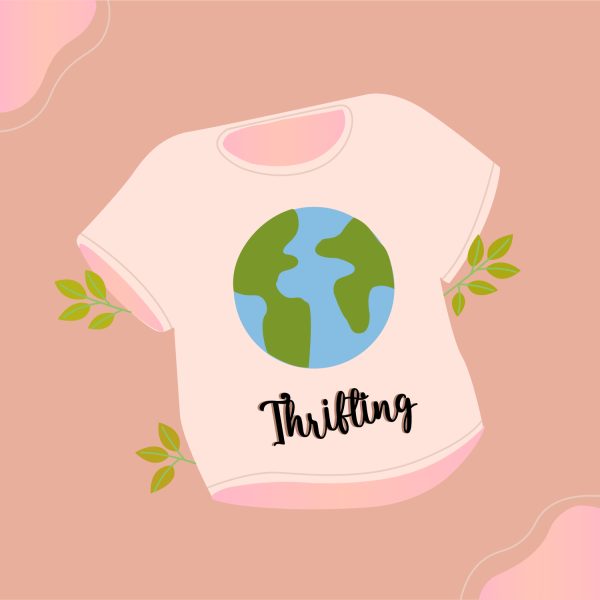Dogs and Humans: The Relationship That Changed The World
Dogs are everywhere, and are incredibly loving and supportive. With an overwhelming set of positive qualities, it is hard not to fall in love with our canine pals.
January 3, 2019
Dogs and people. People and dogs. It is a relationship that dates back thousands of years, one that arguably is thriving the most it ever has right this very moment.
In nearly every part of the world, humans cannot get enough of man’s best friend–but why? Is the domestication of dogs unique? What makes the bond between the two species so strong? How has society transformed from the addition of dogs?
According to The Atlantic, scientists dispute exactly when the wolf was domesticated into the dog, ranging anywhere from 10,000 to 30,000 years ago. However, during the domestication process, the alterations are clear: obedient temperament, smaller teeth, wide variations in coat, ear shape, and color. The grey wolf became the dogs everyone knows, and many love, today.
Just how did dogs transform from wild hunters to playful pups? As reported in National Geographic, after conducting genetic analyses comparing wolves and dogs, researchers found that various genomes have altered in dogs from their wolf relatives, making them friendlier. According to the article, when comparing the modern-day canine to the wolf, “studies have shown that dogs are more sociable than wolves raised in similar circumstances, generally paying more attention to humans and following our directions and commands more effectively.”
But dogs were not the only animal to be domesticated into a common household pet. Overtime, wild cats transformed in ways similar to dogs, although cats retain some of their independent disposition and less agreeable attitude. According to freshman Hallie Graves, humans became closer with dogs than cats during the domestication process because “dogs tend to be more happy and they’re also a little more helpful than cats are in some ways.” Junior Maverick Mendoza has similar opinions, saying, “I definitely feel like cats are a lot more independent than dogs.”
Despite the fact that an estimated 85.8 million cats are owned in the United States compared to 78 million dogs, perhaps due to the low level of care cats require, the bond between humans and their canine pals arguably reigns supreme. Dogs are pack animals, seeking companionship and acceptance from their owners whereas cats, both domesticated and wild, tend to live more solitary lives.
Other qualities make humans and dogs so compatible, and according to freshmen Christopher Pile, “Humans usually want to take care of something and a dog is a fantastic substitute for that, and I think dogs really like humans because humans provide them food [and] meet their needs.” A symbiotic relationship between the two species lends itself to such a friendly dynamic, but sophomore Stephan Sweeney believes that “dogs and humans share the same love for each other,” with emotions playing a large role as well.
To junior Abigail Smith, there is not just one aspect of dogs that humans love the most, but many. Smith says, “They’re cute, they’re good companions, you can train them, they’ll listen to you, they can be used for many different purposes whether it’s a family pet or whether it’s a rescue dog.” And it is true, a dog’s role does not stop inside the home; dogs serve as emotional support animals, service dogs for those with disabilities, as part of law enforcement, and as farm help.
With dogs interlacing throughout many parts of society, a great number of lives are touched by the presence of the furry friend, forming bond after bond. According to Mendoza, one of the reasons the bond between humans and dogs is so strong is that “dogs can be there for you no matter what, especially if you feel like even nobody else might be at the time.”
The presence of dogs in humans’ lives has truly changed the world, especially in times of needed support and positivity. Graves feels that dogs have increased people’s happiness, believing that “emotional support is a huge part of having a dog.”
The health benefits of owning a dog are detailed in Psychology Today, which states: “Research looked at [people] 60 years of age and older, who were not living with human companions, but were living with a pet. The likelihood that the non-pet owners would end up being diagnosed as clinically depressed was four times higher [than] that found in the pet owning people of the same age.” Just as remarkable, interacting with dogs can reduce many of the common symptoms of stress: high blood pressure, elevated heart rate, and tense muscles.
Emotionally and physically, many people have dogs to thank for positively impacting their health and overall happiness in life. So are dogs an indispensable part of society? Senior Alyson Nelsen agrees that dogs are essential to our modern world. Without dogs, Nelsen believes some people would be a great deal sadder if “they [couldn’t] come home and have their dog waiting for them.”
Many people feel so strongly connected to their pups that they treat them similarly to children, referring to them as ‘babies’ or providing them with lavish care and conditions. Even if a person does not treat their pet to such an extent, it really is almost impossible to imagine life without dogs.
Dogs are everywhere, and are incredibly loving and supportive. With an overwhelming set of positive qualities, it is hard not to fall in love with our canine pals.







